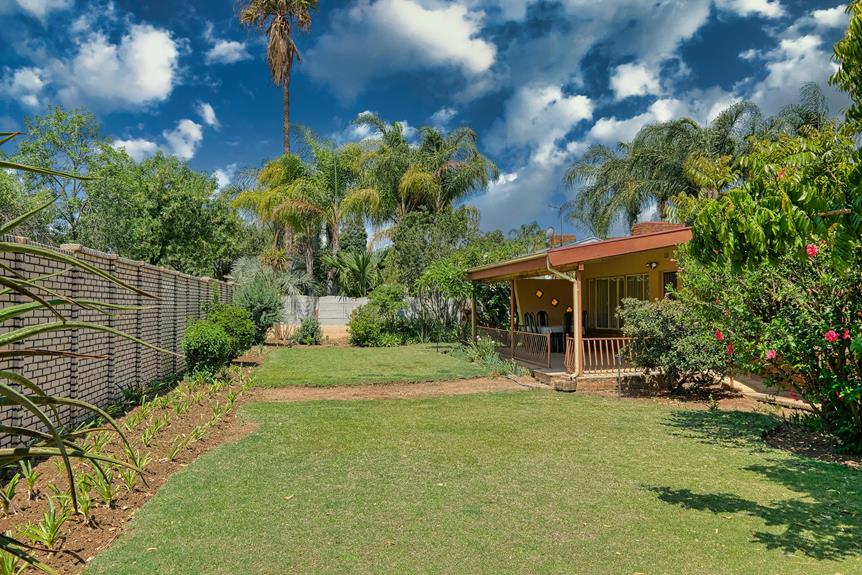While it might seem challenging to set up an Aerogarden, you'll find it's quite straightforward once you get started. First, select a model that fits your space and plant preferences. You'll need to assemble the unit near a power source, which is usually a quick process. Next, insert the seed pods of your choice—herbs, flowers, or vegetables—and add the necessary water and nutrients. As you watch your garden begin to sprout, consider the specific needs of your plants. How will you make sure they thrive in their new environment? Stay tuned for tips on maintaining ideal growth conditions.
Key Takeaways
- Choose a model that fits your space and plant type needs, like Sprout for herbs or Bounty for vegetables.
- Set up the Aerogarden near a power source, assembling it as per the instructions.
- Fill the water reservoir with distilled water to the indicated level and add the recommended liquid nutrients.
- Insert pre-seeded pods into the Aerogarden, ensuring they are properly placed for optimal growth.
- Regularly monitor water levels, nutrient needs, and light settings to maintain plant health.
Selecting the Right Aerogarden Model
Choosing the right Aerogarden model depends on your space availability and what you plan to grow. You've got the power to tailor your indoor garden to fit not just your space, but also your aesthetic and functional needs.
First, assess how much room you can dedicate to the Aerogarden. If you're limited on space, consider compact models like the Sprout or Harvest. These fit neatly on most countertops without overwhelming your area.
However, if you're aiming to cultivate a larger variety of plants or perhaps more of each type, you might want to opt for larger models such as the Bounty or the Farm family. These units not only offer more pod spaces but also come with enhanced lighting and a higher capacity for water, which means less frequent refilling for you.
Your choice also hinges on what types of plants you intend to grow. Herbs and salads require less space and grow well in most models, but if you're planning on growing larger plants like tomatoes or peppers, you'll appreciate the extra room and stronger light systems of the bigger models.
Always consider the adult size of your plants; this foresight ensures they won't end up cramped, leading to suboptimal growth and yield.
Setting Up Your Aerogarden
Once you've selected your Aerogarden model, setting it up is a straightforward process. First, find a suitable location. You'll want a space where your Aerogarden can remain undisturbed, yet easily accessible for monitoring and care. Make sure it's near a power source; these units need electricity to function.
Next, assemble the unit. This typically involves attaching the grow lights to the base. Follow the specific instructions provided with your model to guarantee everything is secure. Incorrect assembly can lead to issues later, so take your time to get it right.
Now, it's time to add water to the reservoir. Use distilled water to prevent any mineral buildup that could clog the system. Fill the reservoir to the indicated level, then add the liquid nutrients that came with your kit. These nutrients are essential for plant growth, so measure them carefully according to the guidelines.
Choosing Your Plants and Pods
Now you'll pick the plants and pods that best suit your culinary or aesthetic preferences. Your choices should align with not only what you love to eat or see but also the conditions your Aerogarden can support. Consider factors like growth rates and plant heights to make sure every species thrives without overshadowing others.
Here's a quick guide to help you decide:
- Herbs: Perfect for beginners, they grow quickly and don't need much space. Choices like basil, cilantro, and mint are popular.
- Salad Greens: These are ideal if you're looking for a quick harvest. Lettuce, spinach, and arugula will flourish under the LED lights.
- Flowers: If you're more interested in aesthetics, vibrant flowers like petunias or pansies can add a splash of color to your indoor garden.
- Vegetables: For more substantial fare, try tomatoes or peppers. Just make sure your Aerogarden model has enough room for these larger plants.
Understanding Aerogarden Maintenance
Maintaining your Aerogarden requires regular attention to make sure your plants thrive. You'll need to set a routine to check water levels, nutrient solutions, and light settings to ensure ideal growth conditions.
It's important to top off the water regularly—don't let it go below the minimum fill line, as this could stress your plants. Adding fresh water also helps dilute the nutrient concentration, preventing nutrient burn that can harm delicate roots.
Monitoring and adjusting the pH of your water is another key aspect of maintenance. Aim for a pH level between 5.5 and 6.5 for most plants. You can find pH testing kits at any gardening store. If the pH is off, you'll need to add pH adjusters, carefully following the instructions to avoid shocking your plants.
Don't forget about cleaning your Aerogarden. Every few weeks, take the time to wipe down the light hood and the outer surfaces to prevent dust from blocking the light. Also, clean out the water basin and filter system every couple of months to prevent algae growth and ensure smooth operation.
Troubleshooting Common Issues
Despite regular maintenance, you might still encounter some issues with your Aerogarden; let's address how to troubleshoot these common problems.
It's important you feel in command of the situation, so here's what you can do:
- Weak Plant Growth: If your plants aren't thriving as expected, check the light settings. Insufficient light can stunt growth. Adjust the light hood to make sure it's close enough to your plants but not too close to scorch them.
- Nutrient Issues: Yellowing leaves often indicate a nutrient imbalance. Make sure you're following the recommended feeding schedule and using the proper nutrient solution. If you've been consistent, consider flushing the system with clean water before adding fresh nutrients.
- Pump Problems: A non-functioning pump can halt your Aerogarden's operation. Listen for unusual noises and check for blockages in the pump. Regular cleaning can prevent sediment build-up.
- Algae Growth: Exposure to external light can lead to algae buildup. Keep your Aerogarden away from direct sunlight and regularly clean exposed surfaces with a food-safe cleaner.





Konnichiwa! (Hello!) I'm Pat Tokuyama, a Japanese tofu cookbook author, who travels for music, food, and adventure. If you like Japanese tea, checkout some of the newestorganic japanese tea, matcha bowls and noren and more!
** Curious about the Plant Based Japanese Cooking Club? ** Learn more here!